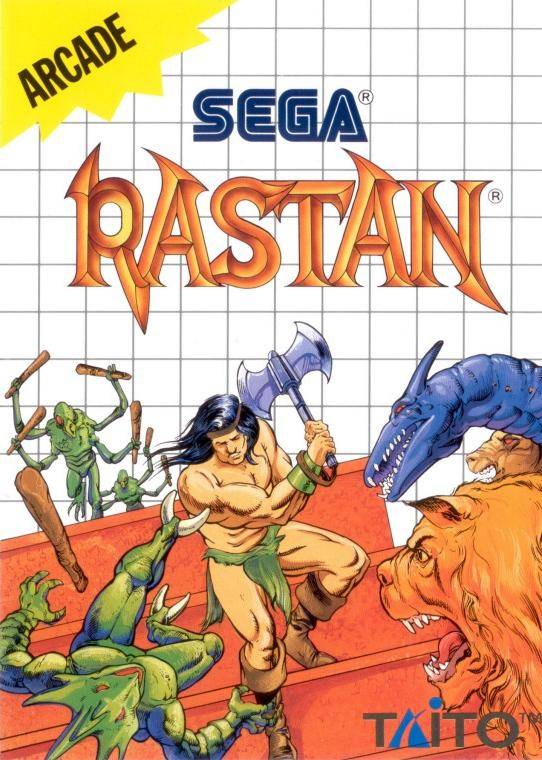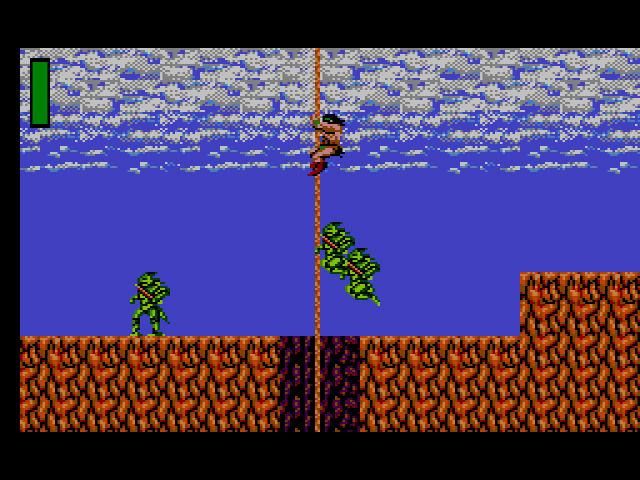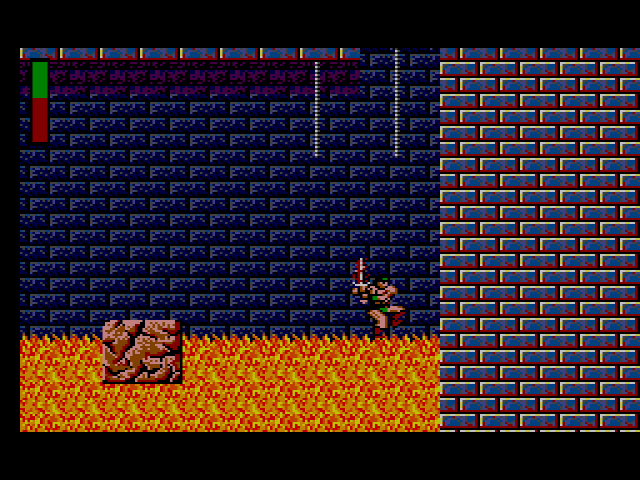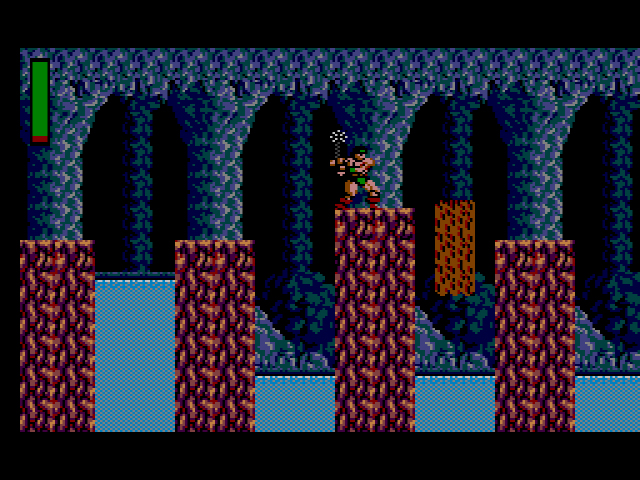
PLAYERS: 1
PUBLISHER/DEVELOPER: Taito
GENRE: Action
RELEASE DATE: 04/1989 – (US), 1989 – (EU)
Rastan is an arcade adaptation of Taito’s Rastan Saga, a Conan-esque hack-and-slash that’s superior to any real Conan game. You control Rastan through seven fantastical worlds, each with three separate parts. Stage 1 is almost always an outdoor level in the woods or atop mountains and usually has several paths towards the end. Beware, however, when the stage starts to turn dark. If the screen goes pitch black, endless swarms of bats and bees will hound you until you complete the area. Stage 2 heads indoors to a castle or a cave – more linear, claustrophobic layouts – while Stage 3 is always the boss battle. At first, you’re armed only with a sword and a loincloth (your loincloth, unfortunately, doesn’t repel enemies), but stronger weapons like flaming swords, maces, and battleaxes can be collected and used throughout the level for maximum deathblows.

While the game initially looks like any other hack-and-slash, Rastan has some unique features that distinguish it from other Master System action titles. In addition to the aforementioned weapons, you can also find armor and shields that, once received, will automatically be equipped for a limited time. Rastan can also jump off walls, a feature not found in the arcade version. Many of the levels have been redesigned to make use of this jump, which, while cool, doesn’t negate the difficulty Rastan has with jumping. Another weird, but welcome idea: Rastan doesn’t get killed immediately upon landing in lava or water. If you land in either substance, you’ll take hits, but, in most instances, you’ll be allowed to jump through it to safety.

Unfortunately, Rastan controls like an actual barbarian. He’s slow and lumbering and can’t seem to kill the bizarre creatures he faces without taking a hit or two. He can, however, slice upwards and downwards, so his killing methods are slightly more advanced than other topless heroes.
Jumping in particular is where Rastan needs work. Rastan has two types of jumps: a short hop for jumping on boulders across lava; and a large leap, which theoretically helps him ascend to higher areas or clutch onto ropes dangling precariously over danger. While the controls for either jump aren’t awkward on the surface (Button 2 jumps, Button 2+Up high jumps), executing the jump precisely can be frustrating. If you accidentally jump too high or don’t jump high enough, you can’t correct your mistake, mid-jump. Which means you’ll have to deal with the consequences – enemies, lava, etc. – wherever you end up landing. Since this happens often, you’ll either make peace with it or let Rastan melt in magma.

And sweet Zeus, is Rastan difficult. Besides the jumping (which will get you into trouble at some point), every time you’ve grown accustomed to the game’s challenge, you’re placed on a swinging rope above a pit of lava while three large block faces hock fiery loogies at you (or some other scenario that makes you question whether Rastan and his quest are worth the trouble). The only way to escape sans damage is to hop like crazy on the block faces, but you – or rather, Rastan – don’t necessarily have the reflexes for such actions. While Rastan’s oiled pecs can take some damage, only having one life and three continues before game over is a hard sword to swallow.
When you’re slicing harpies in the sky, bouncing off of precariously placed pillars, and rope-swinging beyond leaping piranhas with sweaty style and grace, Rastan is a sublime and epic adventure. But when you leap when you should have hopped, and you ask yourself how/why you ended up in a pile of iguana men, the thundering barbarian loses much of his mystery.
C+

8 replies on “Rastan (Master System, 1989)”
I played Rastan a lot and don’t remember it being as difficult as you describe, but 30 somethings don’t have the split second reactions and pattern memorizations like a 13 year old.
Since I pay more attention to the business these days, I just realized Taito published this game on the SMS and not Sega. I wonder what their reasoning was, after all they did publish several NES games like Arkanoid and Elevator Action. Seems like it would of been more profitable with the larger user base.
I excel at rhythmic action games, but Rastan has this stop-and-go momentum that’s very jarring to me. I should have mentioned that in the review, but didn’t think of it until just now.
As for Taito, who knows. You’re right, they probably should have taken this to the NES, but they would have had to downgrade the arcade visuals and possibly the gameplay even more than they already did for the MS port.
I really liked this game as a kid. I remember enjoying the music for some reason. Pretty standard 80’s platformer. I liked the boss fights. I too don’t remember this game being that hard, but it’s not super easy either.
The compositions are great, though they’re limited by the Master System’s weird muddy sound.
Rastan sounds like a type of pasta. Rastan with tomato sauce and meatballs. Very beefy meatballs.
I really liked this game. Being a huge fan of the arcade Impicked this up of course. And I’ll agree,comoared to the arcade, it is a little lackluster. They did make some small changes. The bosses are cool. But it feels a little clunky. I guess being able to play it home I was happy with it. It’s kind of a more methodical Platformer. Waiting and timing your jumps to clear spikes and enemies. And I love the music in this game. Even if the SMS sound is not quite a pale imitation of the arcade.
http://youtu.be/uSY63P37OGY
And Rastan is totally a Conan ripoff.
I loved this in the arcade as a kid though in later years I forgot its name. For years I wondered (erroneously) why it was never ported to a console. It wasn’t until reading your blog that I stumbled across this nostalgic gem.
I recently picked Rastan up and I’m starting to play through it. Not sure how I’ll feel about it once the nostalgia goggles wear off but for now I’m enjoying myself.
If it wasn’t for the confounded controls, I probably would have enjoyed it more.